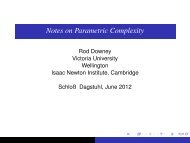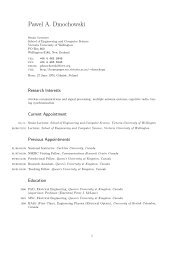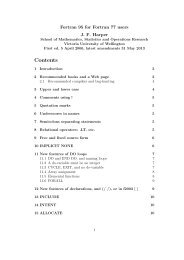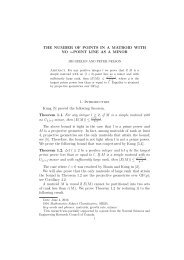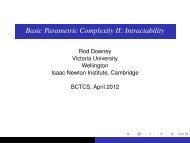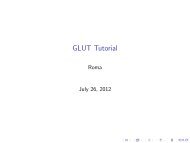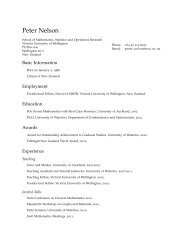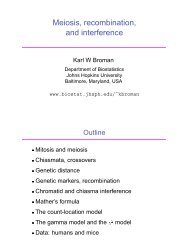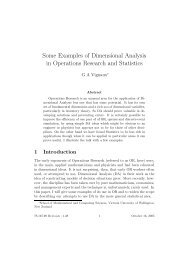Immutability - ECS | Victoria University of Wellington
Immutability - ECS | Victoria University of Wellington
Immutability - ECS | Victoria University of Wellington
Create successful ePaper yourself
Turn your PDF publications into a flip-book with our unique Google optimized e-Paper software.
256 A. Potanin et al.<br />
1 class Foo {<br />
2 // An immutable reference to an immutable date.<br />
3 Date imD = new Date();<br />
4 // A mutable reference to a mutable date.<br />
5 Date mutD = new Date();<br />
6 // A read−only reference to any date.<br />
7 // Both roD and imD cannot mutate their referent,<br />
8 // however the referent <strong>of</strong> roD might be mutated by an alias,<br />
9 // whereas the referent <strong>of</strong> imD is immutable.<br />
10 Date roD = ··· ? imD : mutD;<br />
11 // A date with the same owner and immutability as this.<br />
12 Date sameD;<br />
13 // A date owned by this; it cannot leak.<br />
14 Date ownedD;<br />
15 // Anyone can access this date.<br />
16 Date publicD;<br />
17 // Can be called on any receiver; cannot mutate this.<br />
18 // The method guard ‘‘?’’ is part <strong>of</strong> cJ’s syntax˜[42].<br />
19 ? int readonlyMethod() {···}<br />
20 // Can be called only on mutable receivers; can mutate this.<br />
21 ? void mutatingMethod() {···}<br />
22 // Constructor that can create (im)mutable objects.<br />
23 ? Foo(Date d) {<br />
24 this.sameD = d;<br />
25 this.ownedD = new Date();<br />
26 // Illegal, because sameD came from the outside.<br />
27 // this.sameD.setTime(···);<br />
28 // OK, because Raw is transitive for owned fields.<br />
29 this.ownedD.setTime(···);<br />
30 } }<br />
Fig. 6. An example <strong>of</strong> OIGJ syntax<br />
The immutability <strong>of</strong> sameD (line 12) depends on the immutability <strong>of</strong> this, i.e., sameD<br />
is (im)mutable in an (im)mutable Foo object. Similarly, the owner <strong>of</strong> sameD is the same<br />
as the owner <strong>of</strong> this.<br />
Ownership example. Lines 12–16 show three different owner parameters: O, This, and<br />
World. The owner parameter is invariant, i.e., the subtype relation preserves the owner<br />
parameter. For instance, the types on lines 12–16 have no subtype relation with each<br />
other because they have different owner parameters.<br />
Reference ownedD cannot leak outside <strong>of</strong> this, whereas references sameD and publicD<br />
can potentially be accessed by anyone with access to this. Although sameD and publicD<br />
can be accessed by the same objects, they cannot be stored in the same places: publicD<br />
can be stored anywhere on the heap (even in a static public variable) whereas sameD can<br />
only be stored inside its owner.




